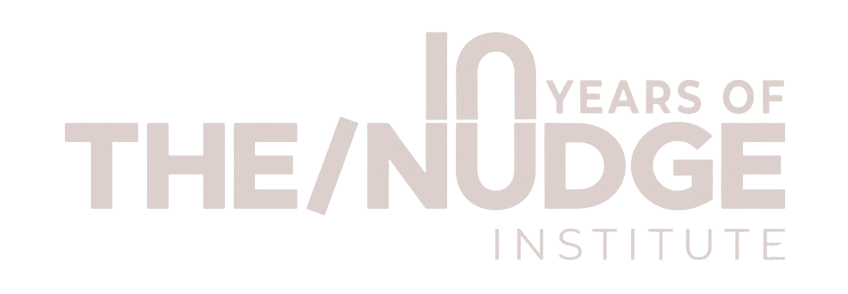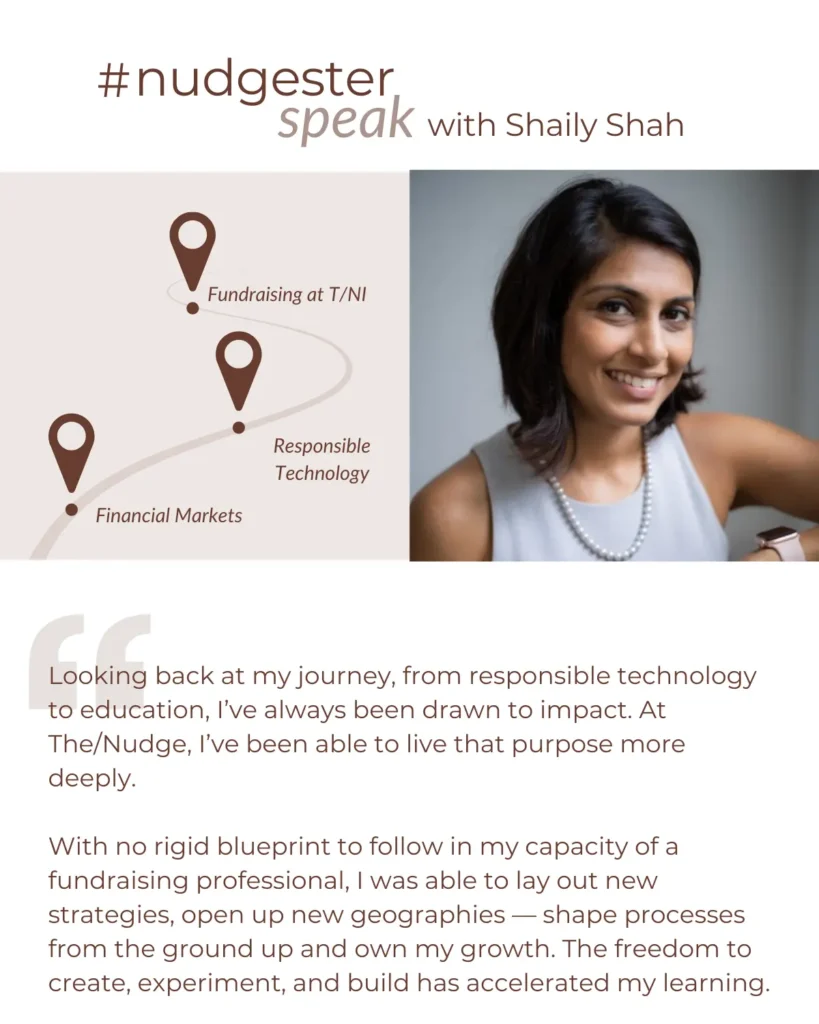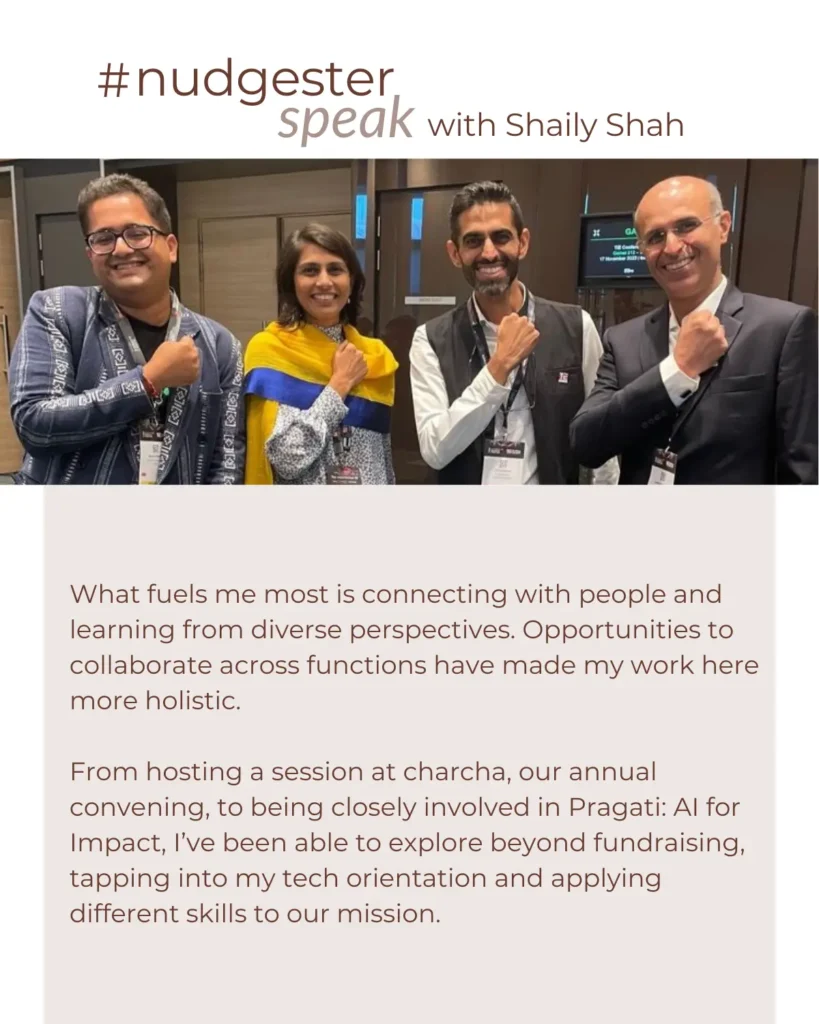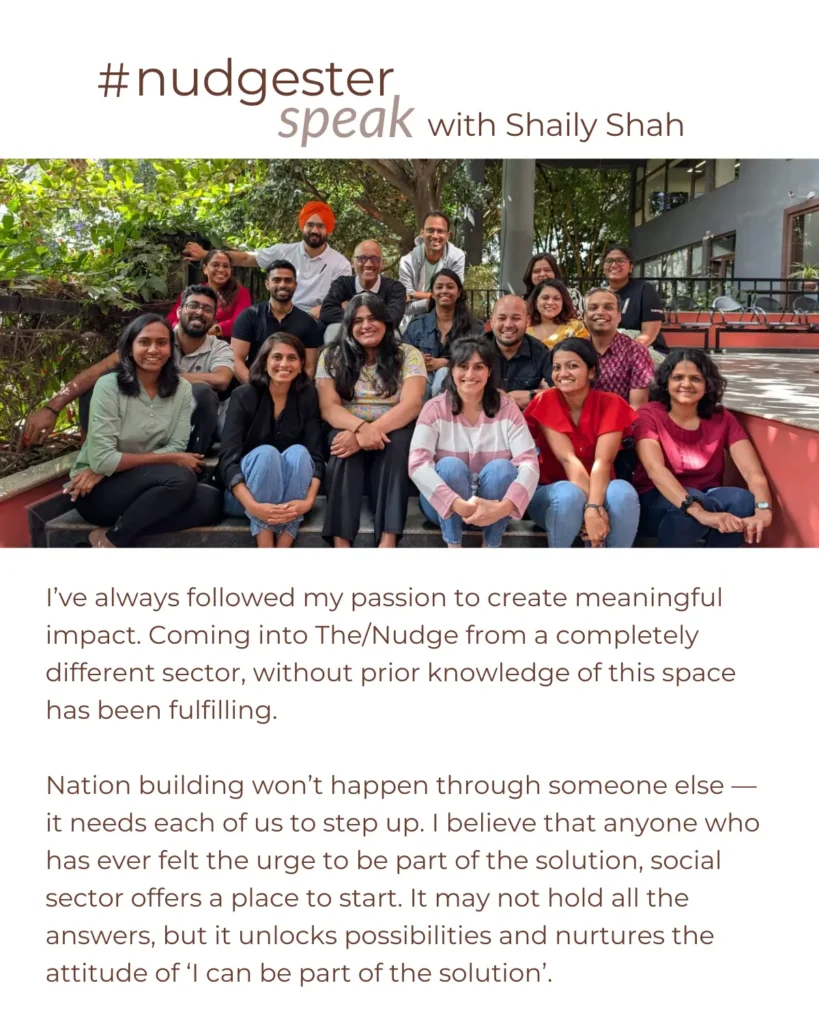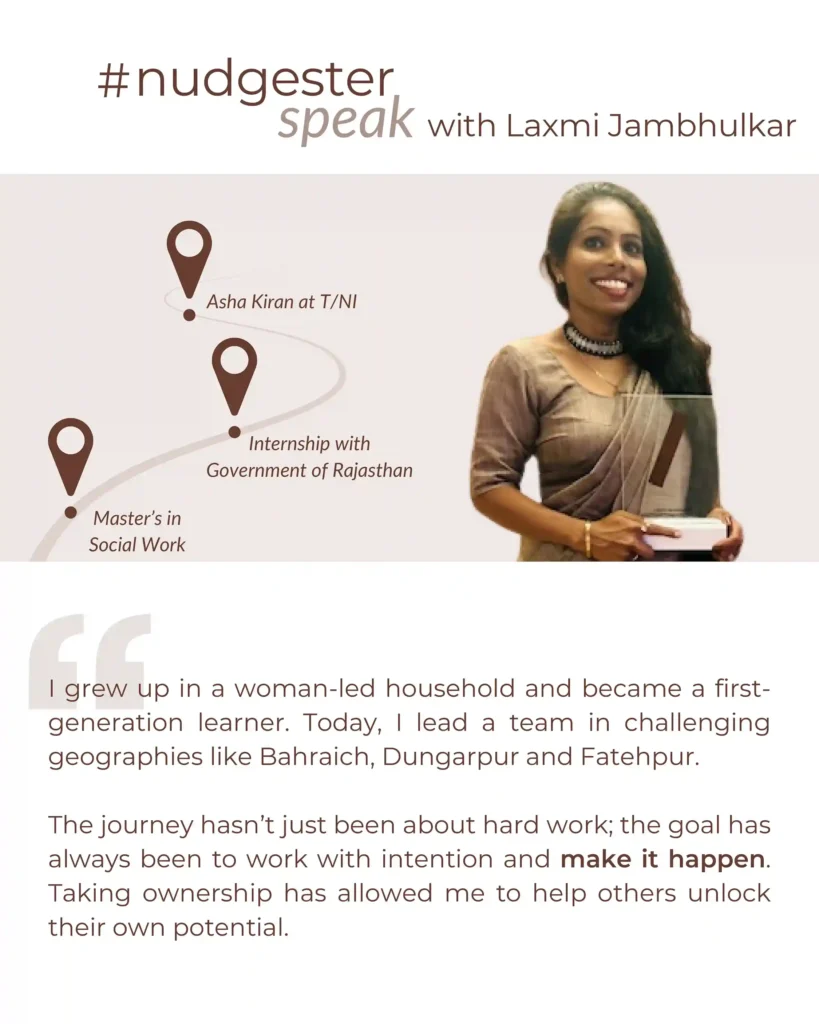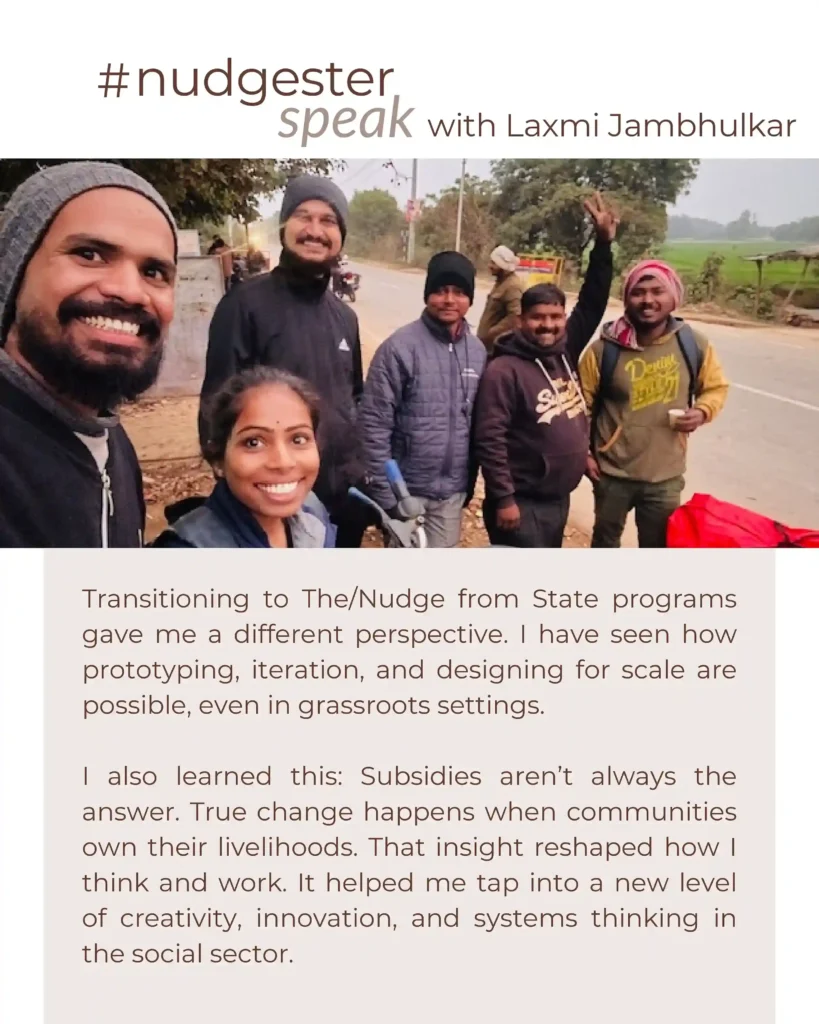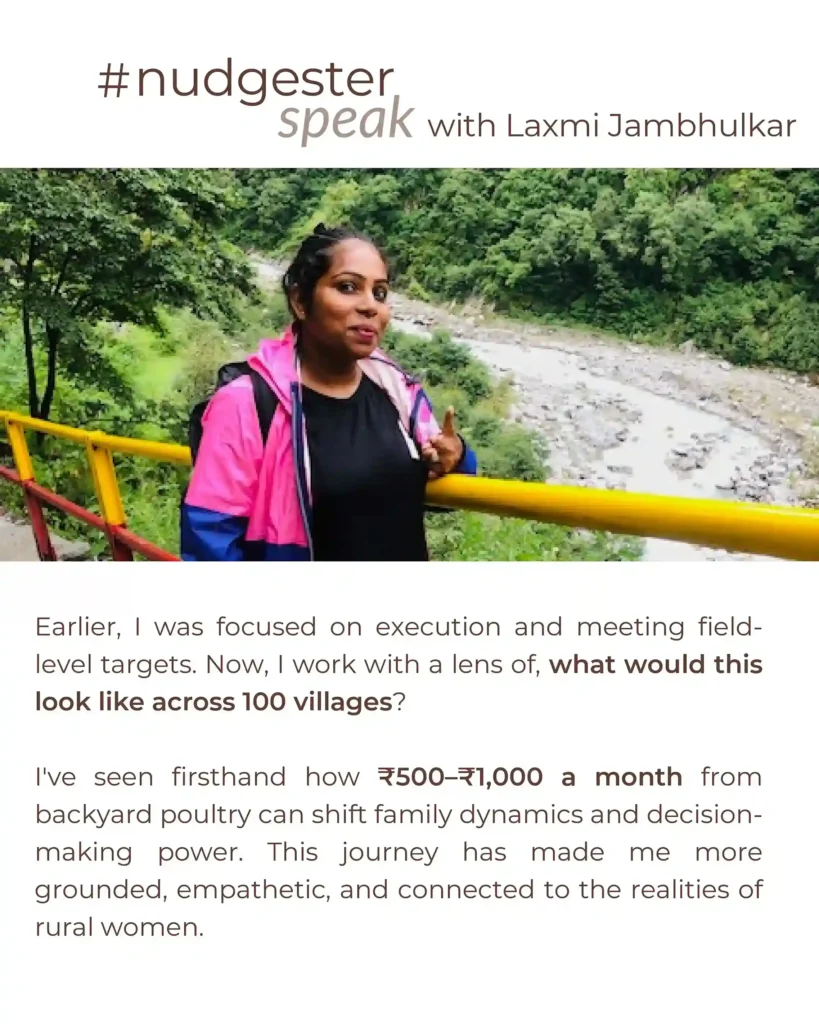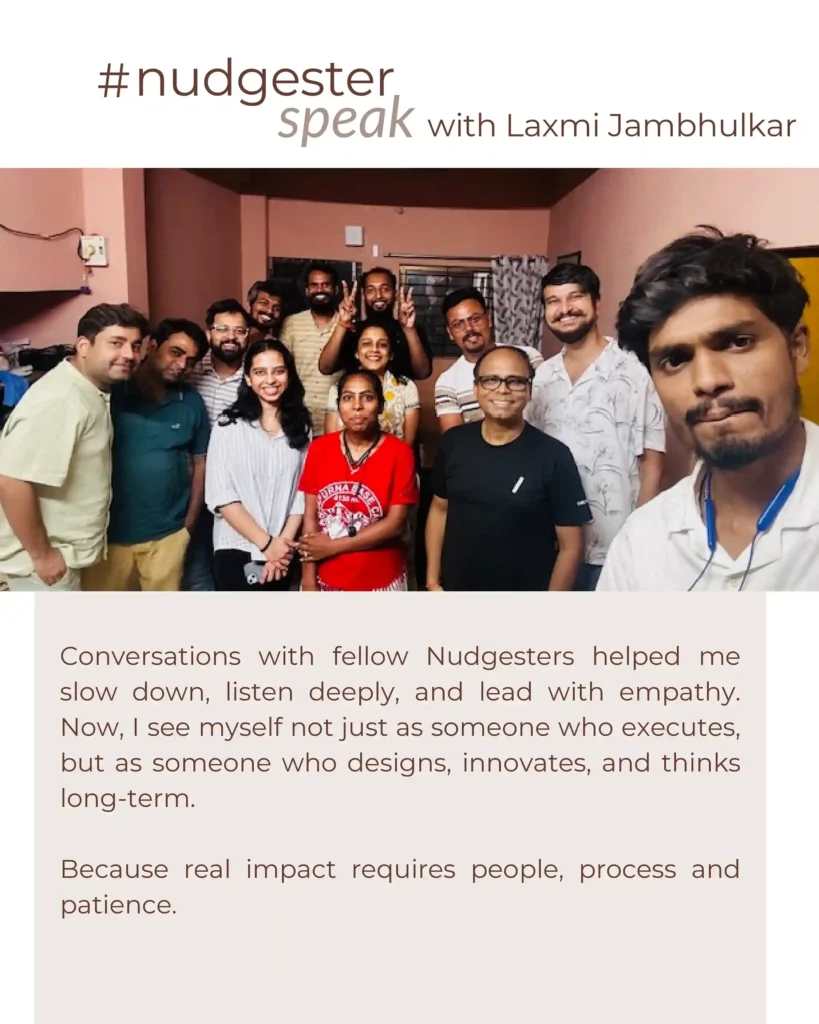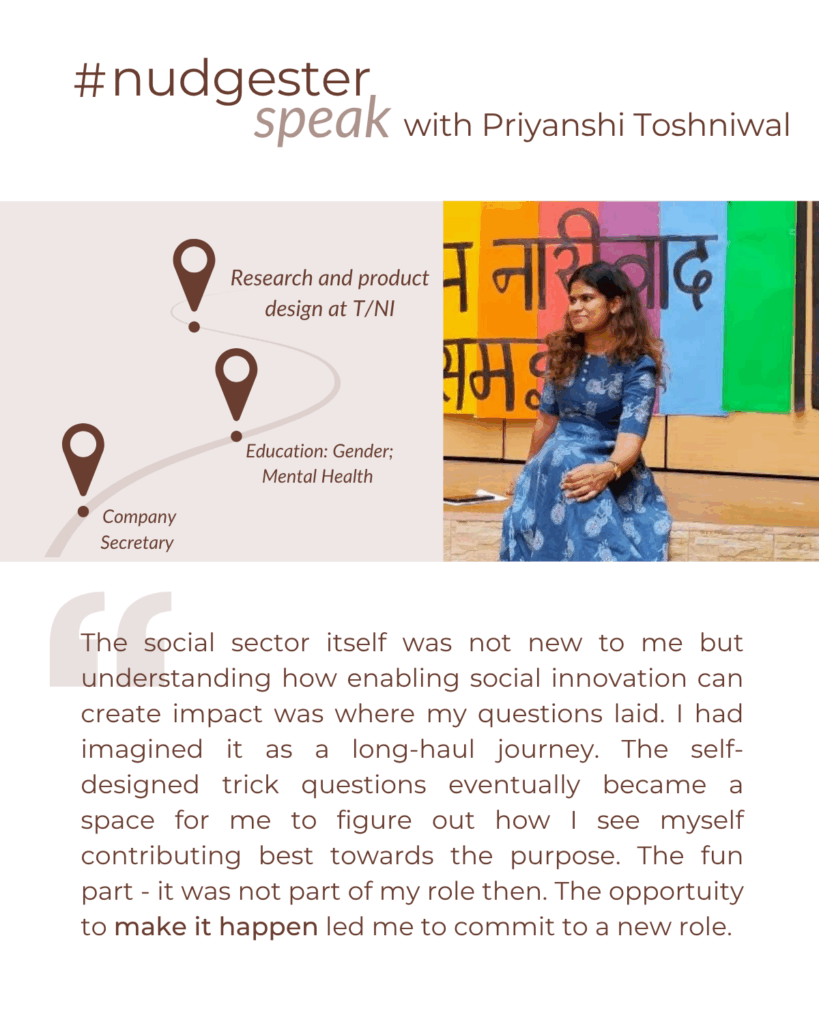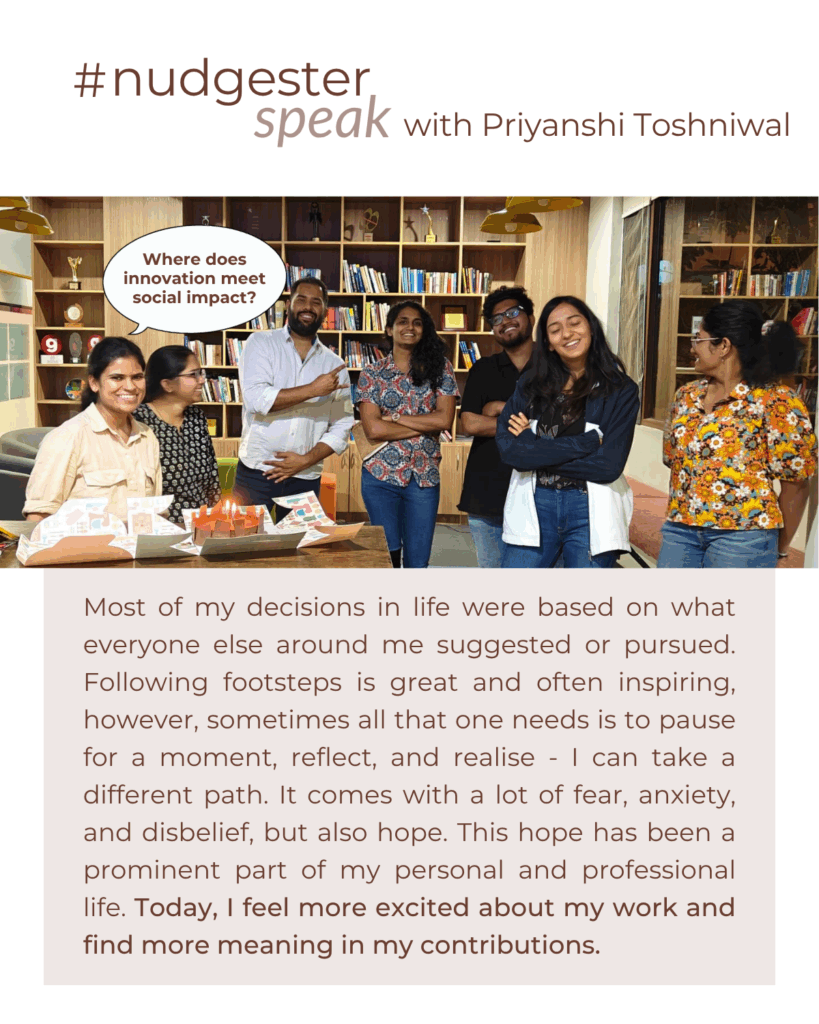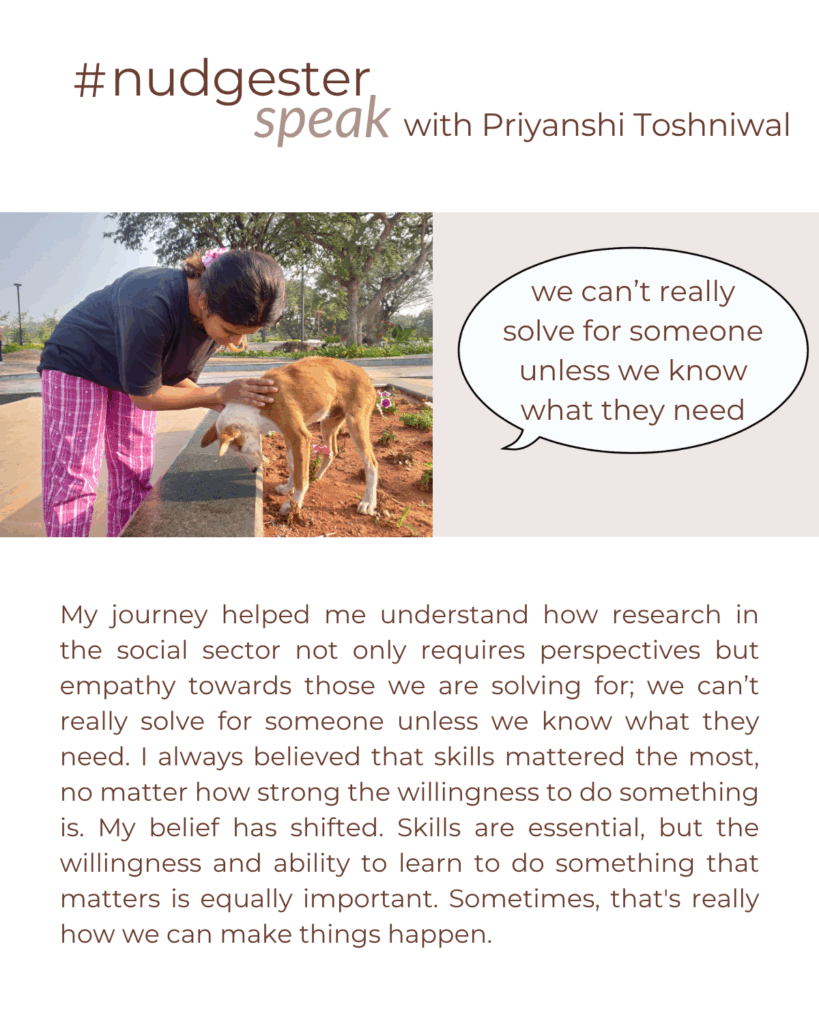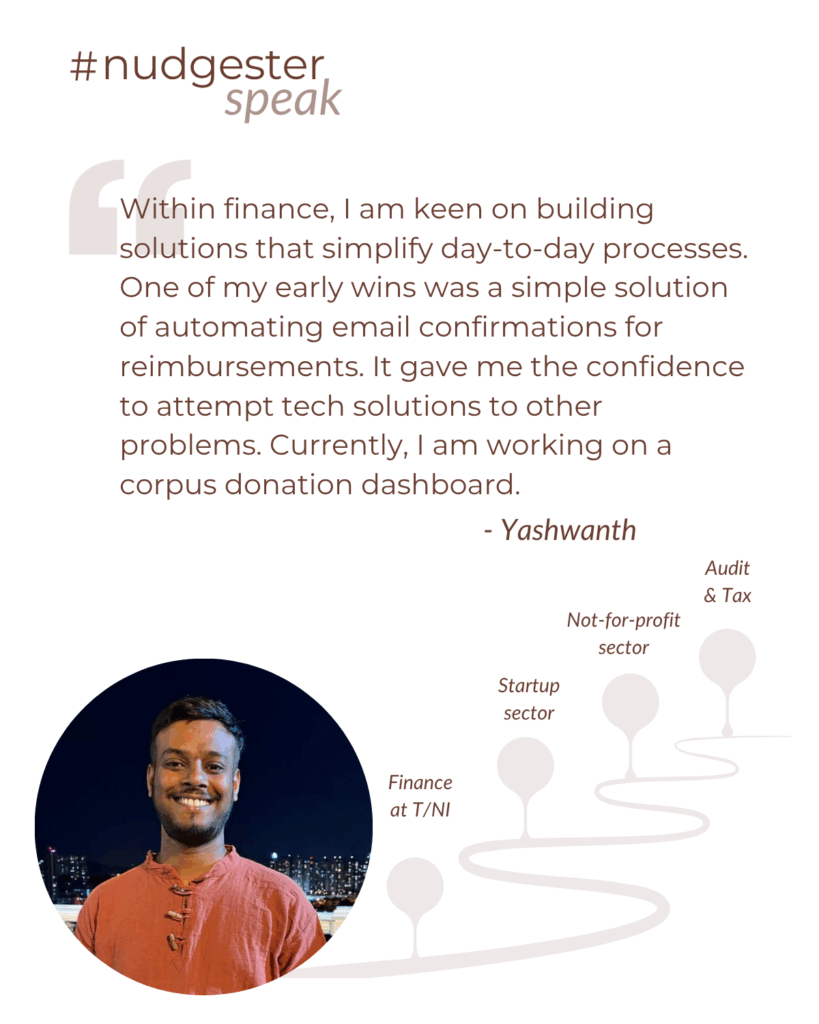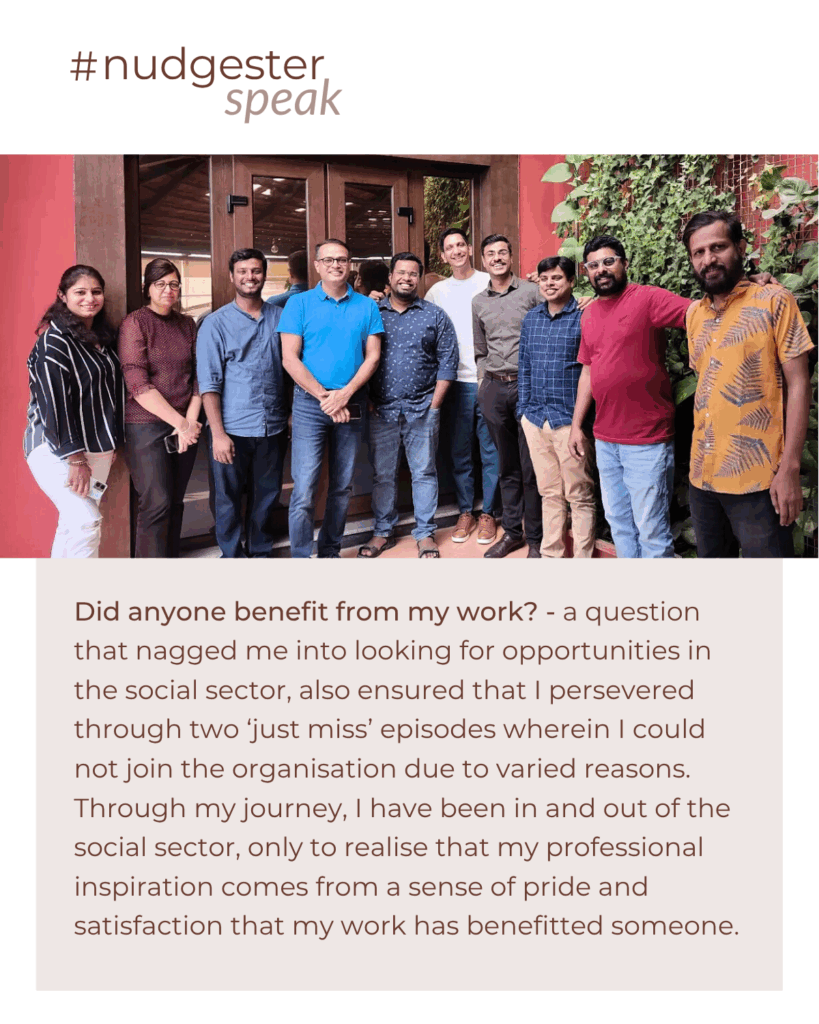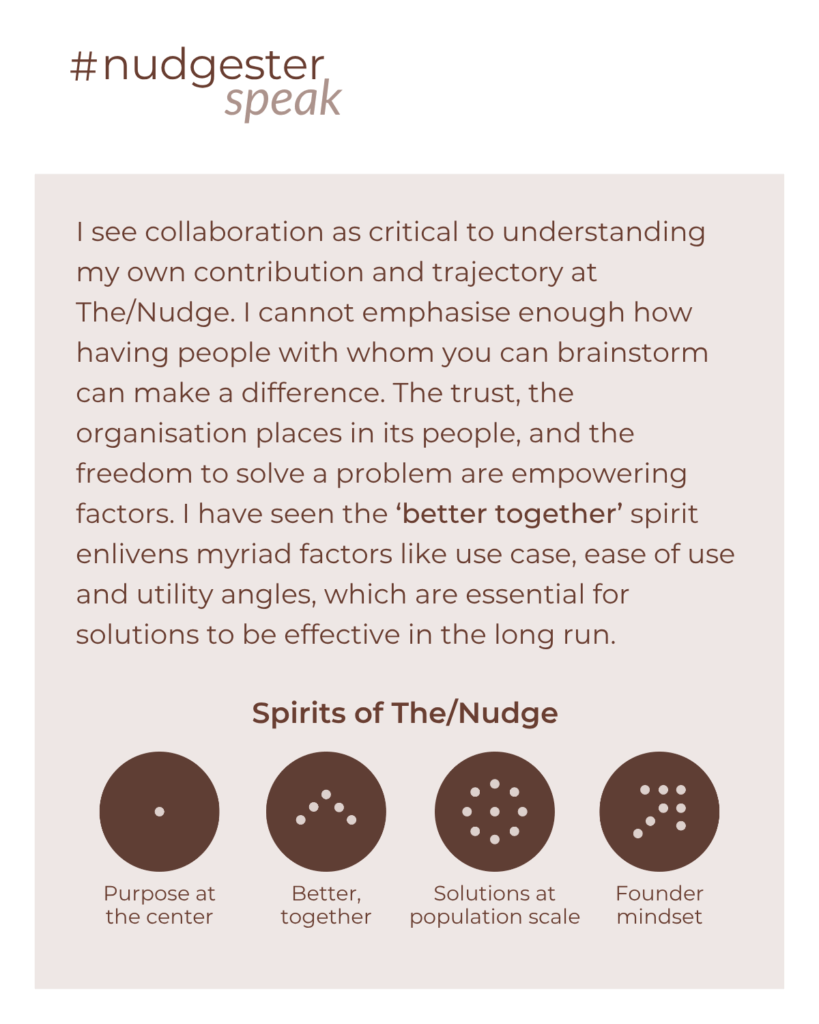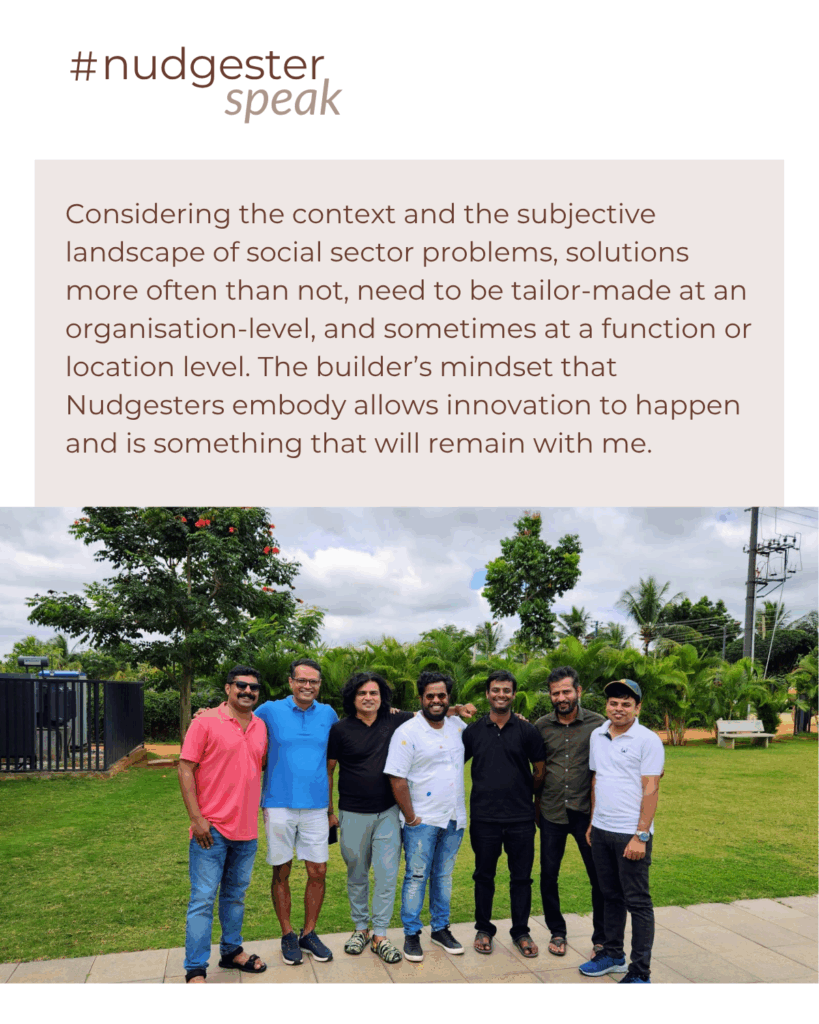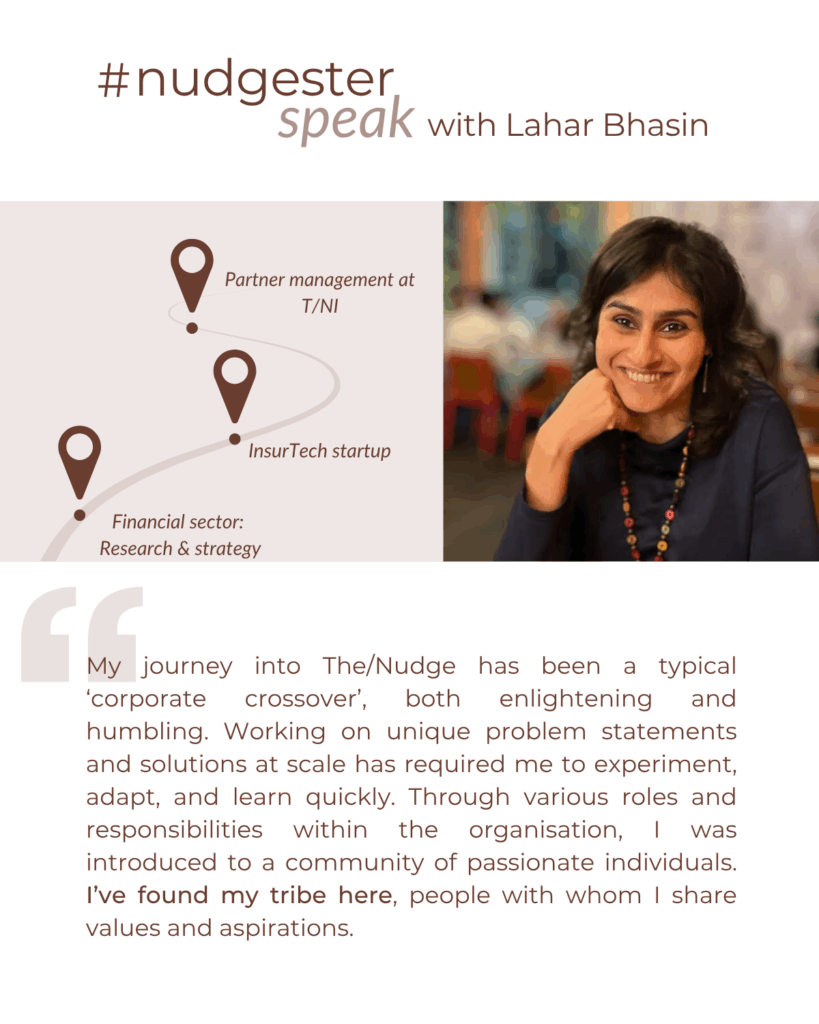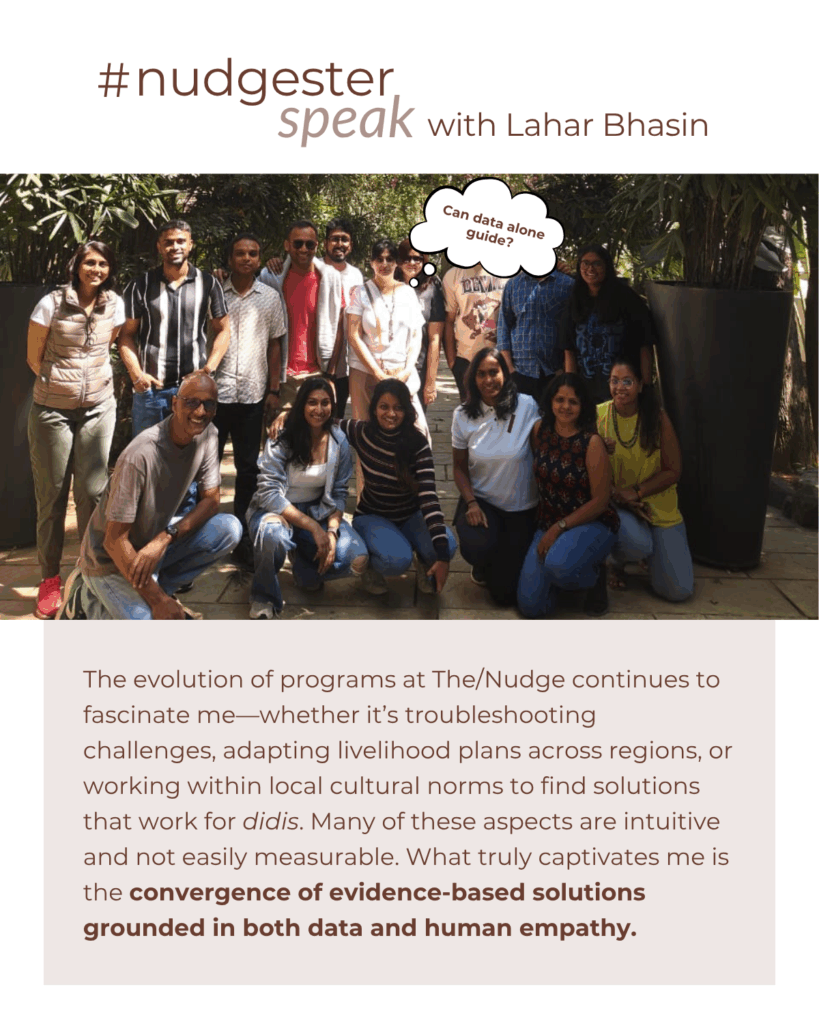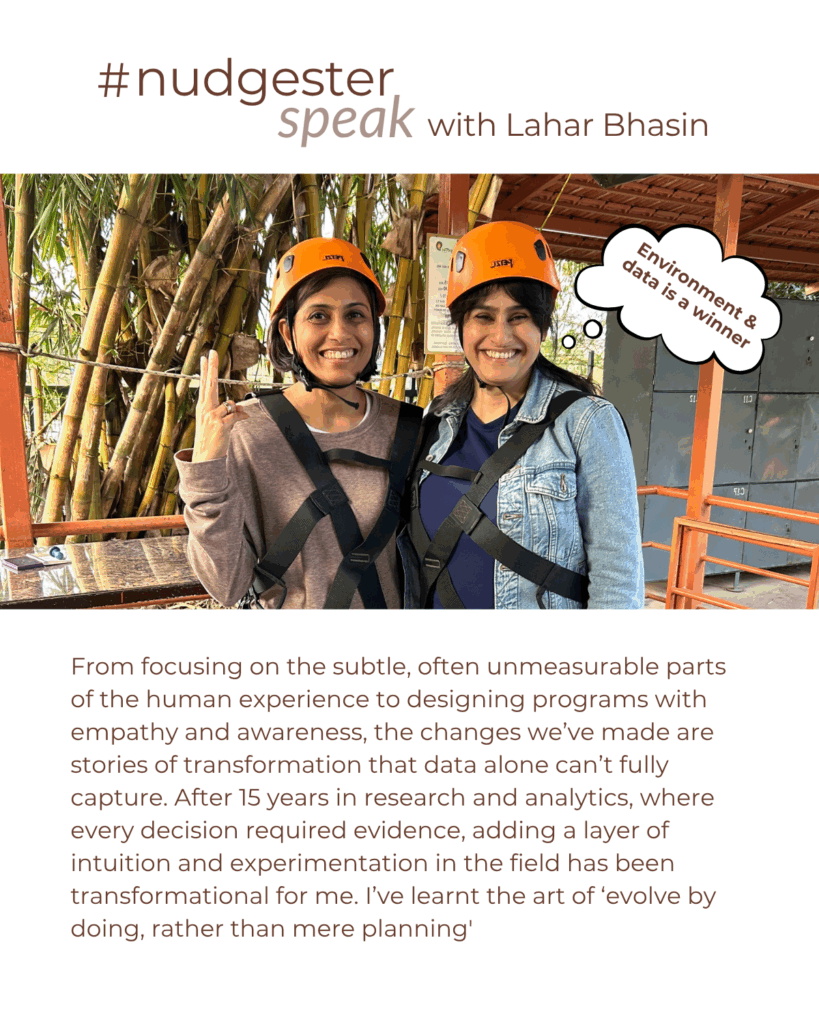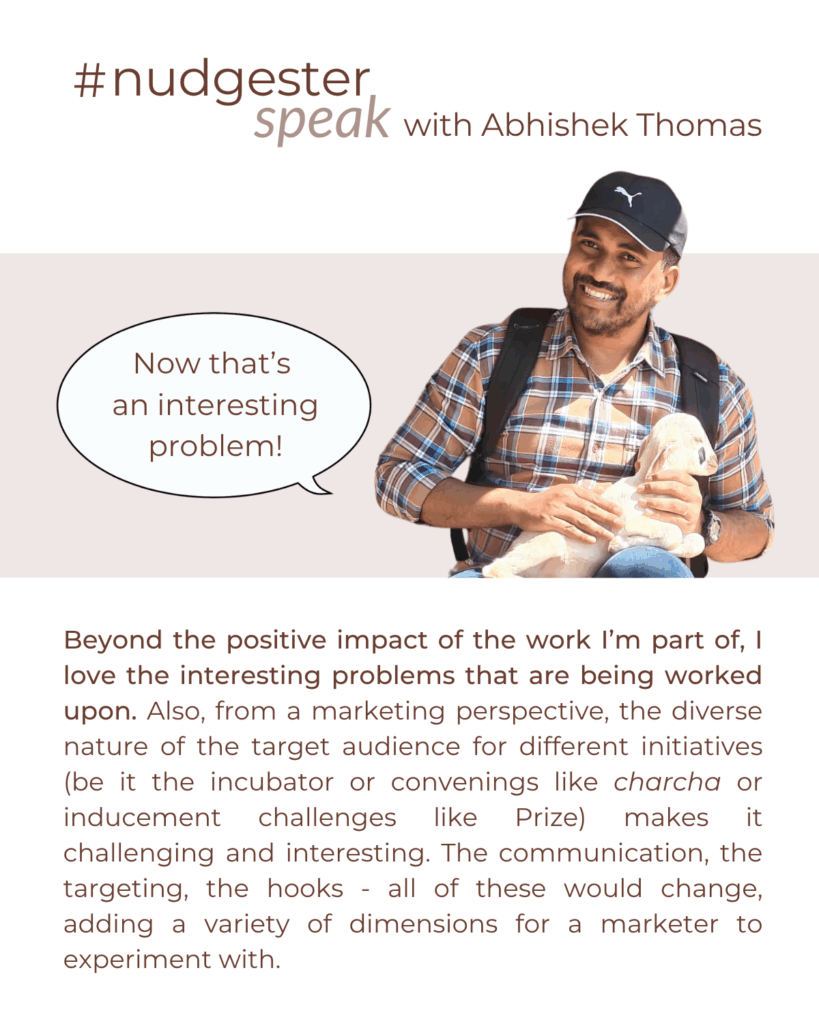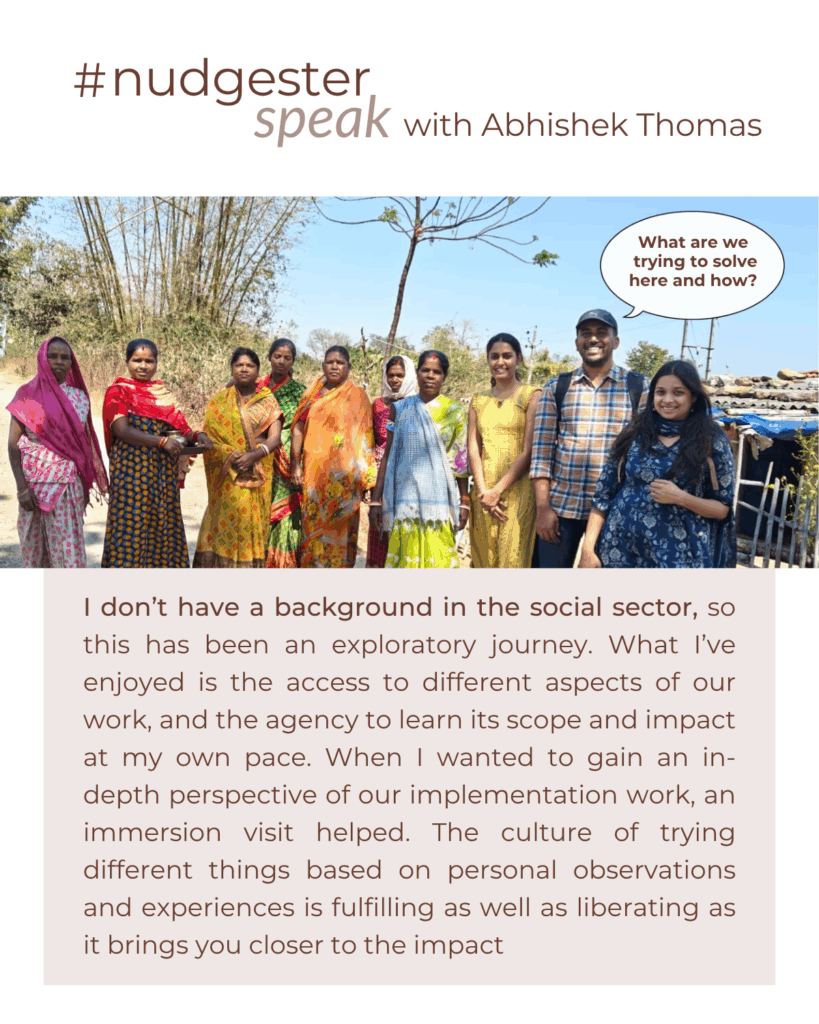Across the globe, work is being reshaped by artificial intelligence. From predictive algorithms to conversational chatbots, AI has quickly moved from being a buzzword to a daily reality in workplaces of every kind. Recent studies show that in the United States alone, nearly 40 percent of employees are already using AI at work, double the proportion from just two years ago. Further, the World Economic Forum estimates that globally generative AI could add between 182- 308 billion US dollars of annual value to the social economy.
With such dramatic shifts underway, the social sector which is often resource-constrained, people-centered, and impact-driven cannot stand apart. The tools may be new, but the underlying question is familiar: how can technology be harnessed to do more, reach farther and create deeper change for communities? At The/Nudge Social Entrepreneurship team, we were curious to explore this question through the eyes of those who live it daily: our founders. So, we circulated a form asking them to share where they see AI showing the most promise in their work, whether they are excited about its potential for broader reach or efficiency gains, and what fears they have about adopting this technology.
Their responses revealed both optimism and thoughtful concerns. More importantly, they showed that AI is not just a corporate story. It is already touching the work of nonprofits, grassroots organizations and social enterprises in subtle but powerful ways. Here are their stories:
Ankit Arora of Saarthi Education described AI as unlocking a new era for learning. Education, by its nature, demands personalization: every child has a unique pace, a unique way of understanding and a unique set of challenges. But for classrooms filled with dozens of students and for teachers stretched thin, this has always been more aspiration than reality. Ankit pointed out how AI is already automating tasks like grading student worksheets and providing them with feedback, freeing teachers’ time for higher-order interactions, while simultaneously enabling personalized learning journeys for every child. In his words, it feels like one-on-one tutoring at scale, an idea that was once impossible, but today, is within reach.
Prashant Chaudhary of CodeYogi Foundation shared a similar optimism but through a different lens. For students in his programs, language and comprehension barriers often make digital education daunting. CodeYogi has been experimenting with AI-powered translation tools and AI-driven instruction models that adjust to a learner’s pace and style. He described AI as not only an efficiency tool but as a bridge helping learners cross gaps of language and confidence that would otherwise have held them back. In communities where digital education is often the first window to opportunity, AI becomes a quiet equalizer.
Aditya Tyagi of I-Saksham Education and Learning Foundation emphasized how AI “democratises the gap of language and articulation.” For leaders and volunteers in rural India, articulating needs or drafting proposals in formal English can be a significant barrier to engaging with government schemes or philanthropy networks. With AI, those barriers are softening. Aditya noted how it is helping community-based organizations save time, present themselves better, and focus more energy on the ground. For him, AI is already amplifying voices that might otherwise remain unheard.
For organizations with lean teams and limited bandwidth, the appeal of AI is immediate. Neha Sahu of Launch Girls described it as a “force multiplier.” Her team, like many social entrepreneurs, juggles multiple demands: fundraising, reporting, designing interventions, measuring outcomes, and keeping relationships alive. AI, she says, helps them “do more with less” by drafting reports, summarizing meeting notes, or preparing first drafts of communication. It doesn’t replace the team’s heart or judgment, but it makes space for them to focus on what matters most, the human side of their work.
Others, too, pointed to AI’s practical uses. Girish Mehta of CLiC Forum noted how community chatbots can provide timely support. Vinay Kumar of Step Ahead India Foundation emphasized AI’s role in scaling knowledge-sharing, skill development, and training. And across submissions, founders spoke of how administrative burdens like report writing, data entry and translation are being lightened by AI, allowing them to redirect effort toward building relationships and delivering impact.
But alongside these stories of optimism came notes of caution. Satvik Sharma of Misfyt Trans Youth Foundation reflected on the risks of ethics and inclusivity, warning that AI is not neutral. If it is trained on biased data, it can easily replicate those biases, leaving marginalized groups even further behind. Ravali Pidaparthi of Esther Foundation offered perhaps the sharpest caution, pointing to the environmental costs of large-scale AI systems. The energy and resources required to power advanced models, she argued, must be weighed against the impact they promise to deliver.
Together, these perspectives paint a realistic picture. AI is neither a savior nor a threat, it is a tool. One that, if used thoughtfully, can stretch the capacity of mission-driven organizations but one that also demands responsibility, ethics and humility.
In the spirit of transparency, this article was created with the support of AI. While we remain mindful of its environmental footprint, using AI helped us save time, reduce manual errors, and focus our energy on refining the insights that truly matter. But AI did not tell us what to think, it did not replace the voices of our founders and it did not remove the human element. Instead, it offered a scaffold. It gave us a structure to work with, a draft to edit and a set of suggestions to refine. In many ways, this collaboration mirrors how we hope AI and the social sector can work together: not as a replacement for human creativity and purpose, but as a partner that makes both shine brighter.





